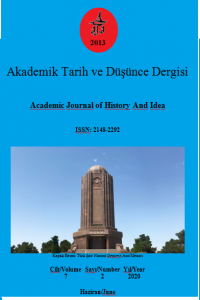Из ранней истории городов Атропатены
Атропатена, клинописные источники, , древние города, древние города, , военные походы, области Атропатены, первые столицы Азербайджана
From the early history of the cities of Atropatena
Atropatena, cuneiform sources, ancient cities, military campaigns, areas of Atropatena, the first capitals of Azerbaijan.,
___
- STARR, I., Queriers to the Sungod Divination and Politics in Sargonid Assyria, State Archives Assyria, C. 4, Helsinki, 1990.
- STRECK, M., "Das Gebiet der heutigen Landschaften Armenien, Kurdistan und Westpersien nach den babylonisch-assyrischen Keilinschriften", Zeitschrift für Assyriologie und verwandte Gebiete, C. 15, Berlin 1901, s. 257-382.
- THUREAU-DANGIN, F., "Une Relation de la Huitiéme Campagne de Sargon (714 av. J-C)", Libraire Paul Geuthner, Paris 1912.
- TREVER, K., "Ocherki po istorii kultury drevney Armenii (II v. do n.e.-IV v. n.e.)", Akademii Nauk, Moskva-Leningrad 1953.
- YAMPOLSKIY, Z., “O tojdestve Antarpatianu I Atropateny”, Uchyonnyye zapiski Azerbaijanskogo Gosudarstvennogo Universiteta, C. 6, Baku 1972, s. 29-32.
- WINCKLER, H., Keilinschrifttexte Sargo". Band I, Verlag von Eduard Pfeifer, Leipzig 1889.
- Yayın Aralığı: Yılda 6 Sayı
- Başlangıç: 2013
- Yayıncı: Hakan YILMAZ
Birinci Umûmî Müfettişlik Bölgesinde Salgın Hastalıklarla Mücadele (1927-1952)
İspanya'da Endülüs Mirası Üzerine Bir Değerlendirme
تحلیل سبکشناسانۀ دو نامۀ سلطانی کتاب ریاض الانشاء
حسنیه رشیدی فیض آباد, علیرضا حاجیان نژاد
İktidar ve İdeoloji Bağlamında Distopyalarda Eğitimin Fonksiyonu: George Orwell'ın 1984 Örneği
II Mahmud and His Statesmen’s Diplomatic Manoeuvres to Solve Mehmet Ali Pasha Crisis
21 Ağustos 1859 Tarihli İmroz (Gökçeada) Depremi
Selanik’te Görülen Salgın Hastalıklar ve Bu Hastalıklarla Mücadele Yöntemleri (1875-1913)
Cumhuriyet Döneminde Veba Salgınları ve Alınan Önlemler (1923-1947)
Pezdevî’nin Hilâfet Teorisinin Temel Dayanakları
Kosova-Prizren ve Yöresi Osmanlı Türkçesi Kitabeleri Hakkında Bazı Tespitler
